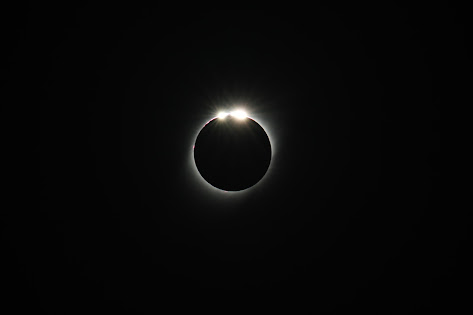The Moon Is Transparent (Not!)

You've probably looked up and seen this same sight once in a while with your own eyes: It may look like we can see through half of the moon to the color behind it as though the moon is transparent. Also notice that some of the darker craters seem to be the same color as the "background" on their south west edge in this photo. In the blue parts of the photos, my camera system and your eyes are seeing the same thing: the suns photons are scattered in our atmosphere and landing on your retina despite the sun not being directly in line of sight. Google this: "The result is that blue light is scattered into other directions almost 10 times as efficiently as red light." This is why the sky is blue. The light that takes the path from the sun to the moon to earth to us directly is much brighter than the scattered blue light we'd see anyways if the moon wasn't there so the camera just captures the sum of the blue sky and the moon.

